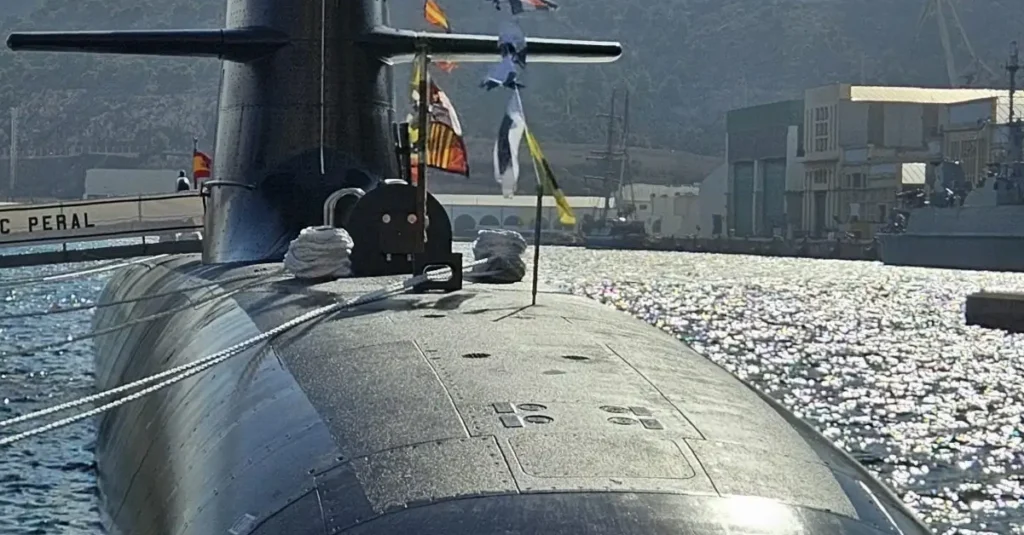
Have you ever wondered how do submarines go up and down beneath the waves, precisely maneuvering through the ocean’s depths? We’ve all seen images of these vessels breaking the surface or disappearing into the underwater world, which raises the question of what allows these massive structures to ascend and submerge so seamlessly. It all comes down to the concept of buoyancy, the force that dictates whether an object will float or sink.
When a submarine needs to dive, it manipulates its buoyancy to become negatively buoyant. This is achieved by allowing water to enter the ballast tanks, which increases the vessel’s weight and causes it to sink. To resurface, the submarine becomes positively buoyant by pushing the water out of these tanks with compressed air, decreasing its weight and allowing it to ascend to the surface.
We find submarines fascinating not just because they can go underwater but because of the sophisticated technology that allows them to control their position in the water column accurately. Whether submerging into the mysterious depths or rising back up to join the world above, these underwater explorers have efficiently mastered the art of moving up and down, using physics and engineering.
Understanding Submarine Buoyancy and Ballast Systems
To grasp how submarines go up and down, it’s essential to understand the concepts of buoyancy and the operation of ballast systems. These are the cornerstones that allow these vessels to maneuver with precision beneath the waves.
How Buoyancy Controls Submarine Depth
Buoyancy is the force that determines whether objects like submarines float or sink in water. It depends on the density of the object relative to the water. For submarines to remain afloat, the force of buoyancy must effectively balance the vessel’s weight.
When the submarine has positive buoyancy, it rises to the surface; with negative buoyancy, it begins to submerge. To maintain a particular depth, submarines aim for neutral buoyancy, where the buoyant force equals the weight, neither sinking nor rising.
The water pressure around the submarine increases as it goes deeper, affecting buoyancy. Control over this factor is critical when maneuvering the steel hulls of submarines underwater. Submarines adjust their density by manipulating the amount of water and compressed air in their ballast tanks.
Operating Ballast Tanks for Diving and Surfacing
Ballast tanks are specialized compartments in a submarine that can be alternately filled with water or air. To dive, ballast tanks are flooded with water, increasing the submarine’s density and causing it to sink. Here’s how the process works for diving and surfacing:
- Diving (Negative Buoyancy)
- Open vents to let air escape.
- Water enters the ballast tanks, increasing weight.
- A submarine dives as its overall density exceeds that of the surrounding water.
- Surfacing (Positive Buoyancy)
- Compressed air is used to force water out of the ballast tanks.
- Reducing the weight and density below that of water.
- The submarine surfaces as it becomes less dense than the water.
Trim tanks allow for finer adjustments, enabling the vessel to attain and maintain neutral buoyancy or change its orientation and angle when submerged. By managing these factors, submarines can skillfully rise or submerge and safely resurface after a dive.
Submarines in Motion: Propulsion, Manoeuvring, and Safety

We’ve all wondered how submarines go up and down, navigating the enigmatic depths of the ocean. It’s a complex interplay of technology, physics, and skilled crew coordination, ensuring these vessels perform their underwater ballet safely.
Navigating the Depths: Tail Rudders and Hydroplanes
Submarines maneuver through the water with the help of tail rudders and hydroplanes. The rudder, positioned at the tail, steers the submarine left or right, while the hydroplanes, mounted on the hull, adjust the angle (pitch) either upward or downward.
When a submarine wants to dive, the crew angles the hydroplanes downward. This change in pitch points the nose of the submarine down, allowing it to descend. Likewise, the hydroplanes are tilted upward to ascend, guiding the submarine toward the surface. The careful adjustment of hydroplanes ensures the submarine maintains the desired depth or returns to the surface as needed.
Power and Propulsion of Submarines
Its power plant is at the heart of a submarine’s power and propulsion. Modern submarines typically use nuclear reactors or diesel engines paired with electric batteries. Nuclear-powered submarines benefit from a virtually limitless energy supply, enabling them to stay submerged for extended periods without resurfacing.
This nuclear reactor turns water into steam, driving the turbines and the propellers for propulsion. Alternatively, diesel-electric submarines run on diesel engines when surfaced but switch to batteries underwater. These vessels must resurface or snorkel more frequently to replenish oxygen for the diesel engines and charge the batteries.
Are You interested in more information about how fast a Submarine can go and its details regarding Speed and Propulsion? Check out our Article about the underwater Marvels!
Emergency Procedures and Submarine Safety
The safety of the crew aboard a submarine is paramount. Quick and precise action is vital in an emergency, such as the risk of sinking. Submarines are equipped with ballast tanks, which, when filled with air, make the vessel buoyant enough to ascend to the surface. Submerging requires letting water into these tanks to increase density.
If a submarine needs to resurface rapidly, emergency blow systems flush the water from the ballast tanks with high-pressure air. Alongside robust life support systems that provide oxygen and other essentials, submarines incorporate numerous fail-safes and redundancies to protect against underwater threats and mechanical failures.
Our considered opinion on Submarines

We find the concept of “How do submarines go up and down” utterly fascinating. The ingenious use of ballast tanks to control buoyancy allows these vessels to navigate the depths precisely.
It’s remarkable how submarines can rise to the surface or dive to the ocean’s depths by simply adjusting the amount of water and air in these tanks. This capability showcases human ingenuity and opens possibilities for exploration and strategic operations beneath the waves.
FAQ – How do submarines go up and down?

In exploring how submarines go up and down, it’s essential to understand they manage buoyancy and navigate the depths with precision. In the following, you will find our FAQ – If you are looking for information regarding 5 person submarines, you’ll find anything you need in this article.
How do Submarines see underwater?
Submarines use sonar (Sound Navigation and Ranging) to “see” underwater. This technology emits sound waves that bounce back upon hitting an object, revealing its location and size.
How does a submarine rise and sink?
To sink or dive, submarines take water to their ballast tanks, increasing their weight to become denser than water. To rise and fall, precisely controlling the amount of water taken in is critical.
How do submarines rise again?
Submarines rise by pushing water out of their ballast tanks with compressed air, making them less dense than water. Monitoring the water expelled ensures that it ascends safely and is controlled.
How do Submarines operate?
Their operation relies on a balance between buoyancy and gravity. They maintain neutral buoyancy underwater by adjusting the water in the ballast tanks, allowing them to stay at a constant depth or move up and down as needed.
We hope you like our Article about how submarines go up and down and we are curious about your Thoughts! Share your opinion about the Topic “How do submarines go up and down” in the comments below!

